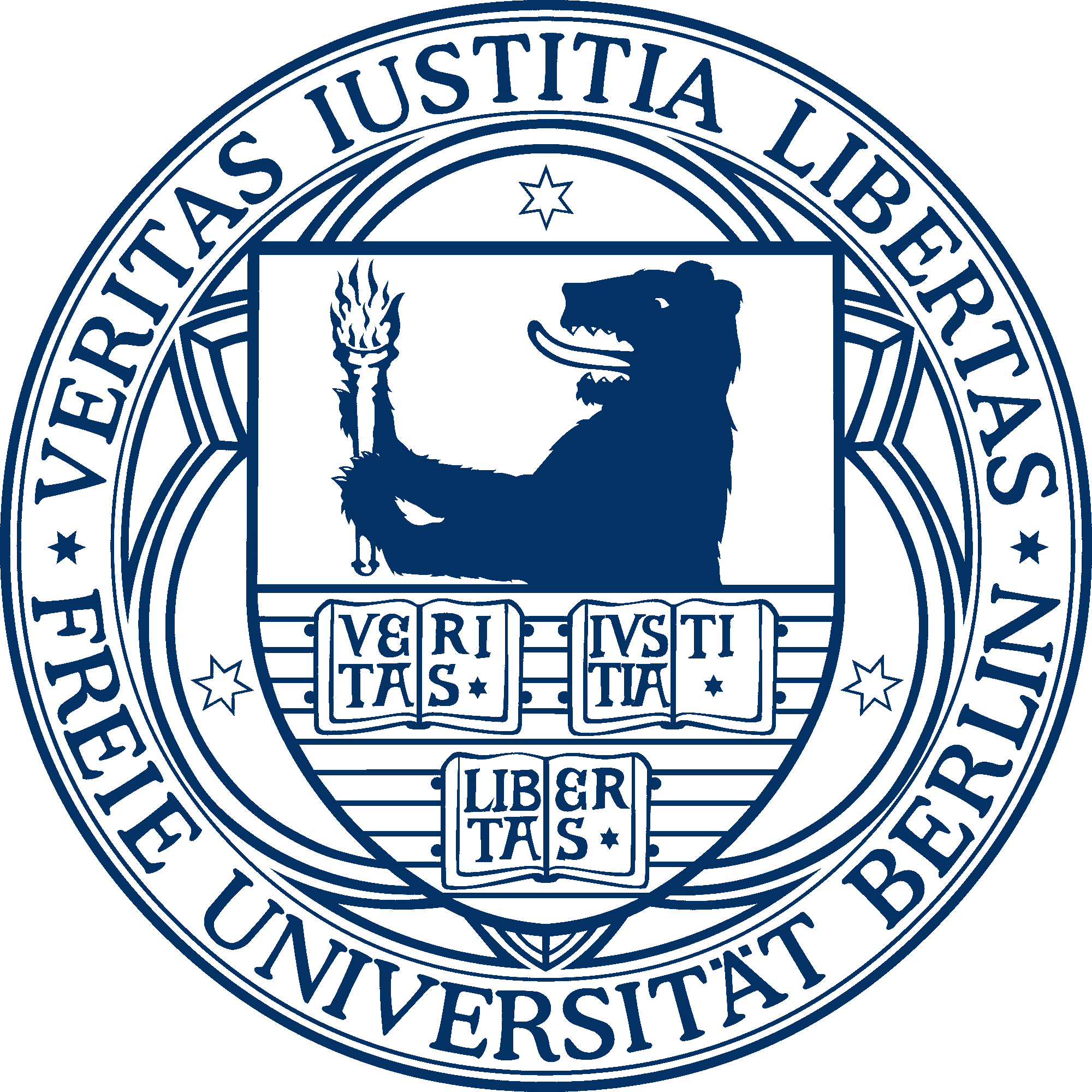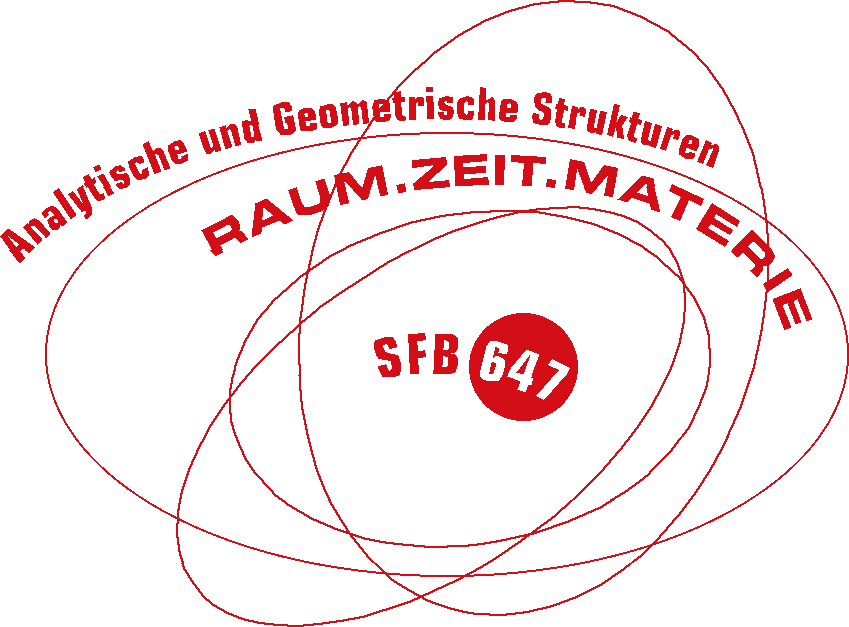Instantons and
Rationality of
Moduli Spaces


Titles and Abstracts
Costa/Miró-Roig/Tikhomirov
Lecture 1: Instanton bundles on IP3 We discuss basic properties on instanton bundles on IP3 and we summarize what we know about their moduli space. Lecture 2: On the smoothness of MIIP2n+1(k) The goal of this lecture is to prove that MIIP2n+1(k) is singular for n ≥ 2 and k ≥ 3. Lecture 3: On the affinity of MIIP2n+1(k) We will prove that the moduli space MIIP2n+1(k) is affine. Lecture 4&5: Irreducibility of moduli spaces The aim of these lectures is to give the proof of the irreducibility of the moduli space of mathematical instantons with odd c2 on IP3.
Böhning/Hoffmann
Lecture 1: Techniques for proving rationality of linear group quotients I Slice method, double bundle method, method of covariants, 2-form trick. Examples: nets of quadrics in IPn, the moduli space of Lueroth quartics. Lecture 2: Techniques for proving rationality of linear group quotients II Special algebraic groups (in the sense of Serre-Séminaire Chevalley), the Hesselink stratification of the cone of Hilbert nullforms and associated fibrations. Examples. Lecture 3: The rationality of the moduli spaces of plane curves of sufficiently large degree Methods: the symbolic method for writing covariants, representing polynomials as sums of powers of linear forms, interpolation and the reduction to finite fields. Lecture 4: The birational type of twisted Grassmannian bundles Gm-gerbes (e.g., moduli stacks of vector bundles), twisted vector bundles, their weight, the associated twisted Grassmannian bundles, their birational type. Lecture 5: The rationality of some moduli spaces of vector bundles We prove rationality for moduli of - vector bundles on a curve (following King-Schofield) - maybe symplectic bundles on a curve - special instanton bundles on IP2n+1 (in the sense of Spindler--Trautmann)
Von Bothmer Affine Groups and Rationality In this talk I will describe two results obtained in joint work with Christian Böhning and Fedor Bogomolov. Firstly we can show that V/SAff(n) is rational for almost free irreducible SAff(n) representations of large dimension. Secondly we use representations of affine groups to show that V/SL(n) is stably rational of level n. Previously only level n2-1 was known in this generality. Jardim Moduli spaces of framed instantons sheaves on IPn We generalize the ADHM construction of instantons to describe the moduli space of framed torsion-free instanton sheaves on IPn, n ≥ 2. We then discuss instanton bundles on IP3 and describe the geometric structure of their moduli space. If time allows, we shall also discuss perverse instanton sheaves. This is joint work with Amar Henni and Renato Martins. Landi Dimensional reduction over the quantum projective line and non-abelian q-vortices We extend equivariant dimensional reduction techniques to the case of quantum spaces which are the product of a Kähler manifold M with a quantum Riemann sphere. We work out the reduction of bundles which are equivariant under the natural action of the quantum SU(2) group, and also of invariant gauge connections on these bundles. The reduction of Yang-Mills gauge theory on the product space leads to q-deformations of the usual quiver gauge theories on M. In particular, we formulate generalized instanton equations on the quantum space and show that they correspond to q-deformations of the usual holomorphic chain vortex equations on M. We study some topological stability conditions for the existence of solutions to these equations, and prove that the corresponding vacuum moduli spaces are generally better behaved than their undeformed counterparts, but much more constrained by the q-deformation. We work out explicit examples, including new examples of non-abelian vortices on Riemann surfaces, and q-deformations of instantons whose moduli spaces admit the standard hyper-Kähler quotient construction. Langer Moduli spaces of framed perverse instantons on IP3 I will talk about moduli spaces of framed perverse instantons on IP3. As an open subset they contain the moduli space of framed instantons, which was studied by I. Frenkel and M. Jardim. I will study the map between the Gieseker and Donaldson-Uhlenbeck partial compactifications of the moduli space of instantons on IP3. I will also construct a few counterexamples to earlier conjectures and results concerning these moduli spaces.
Marchesi On the non existence of orthogonal instanton bundles Instanton vector bundles can be divided into three groups: symplectic instantons, orthogonal instantons and those that do not satisfy the conditions which define the two previous groups. It is easy to find in the literature many examples of instanton bundles belonging to the first and the third family. However it was impossible to find an example of an orthogonal instanton. In this talk we will prove that actually no examples can be found because orthogonal instanton bundles do not exist. Prokhorov E. Noether's problem We survey some results on the rationality question of quotiens of projective spaces by finite groups (E. Noether's problem). We discuss also the relation to the classification problem of finite subgroups of the Cremona group. Trautmann Replacing the boundary by treelike vector bundles Given a moduli space of semistable sheaves, one can try to replace its boundary of non-locally free sheaves by a variety of classes of locally free sheaves in order to eventually better understand the degenerations and the singularities at the boundary. This will be presented for Gieseker-Maruyma moduli spaces MS(P) of semistable sheaves with Hilbert polynomial P on a projective surface S. The replacement in this situation is done in partial analogy to the bubbling in Yang-Mills theory for vector bundles on 4-manifolds. A second type of replacement by vector bundles will be discussed for 1-dimensional sheaves in a Simpson moduli space M of semistable sheaves on the projective plane. Trepalin Rationality of the quotient of IP2by a finite group of automorphisms over an arbitrary field of characteristic zero It is well-known that the quotient variety IP2/G is rational for any finite group G of automorphisms over any algebraically closed field of characteristic zero. We show that the quotient of IP2 by a finite group of automorphisms over an arbitrary field k of characteristic zero is rational. To prove this we consider IP2 over the algebraic closure of k with the action of two groups: the geometrical group G and the Galois group Γ. If it is possible, we find a normal subgroup N in G and consider IP2/N. Next, we resolve the singularities of IP2/N, run the (ΓxG/N)-equivariant minimal model program and get a surface X. Then we repeat the above procedure, applying this method to the surface X and group the G/N. Yoshioka Perverse coherent sheaves on surfaces Bridgeland introduced the moduli space of complexes called perverse coherent sheaves in order to construct 3-fold flop. I will talk on perverse coherent sheaves and their moduli associated to a birational map of surfaces. In particular, I consider the blow-up of a smooth point
Berlin, November 29 – December 3, 2010